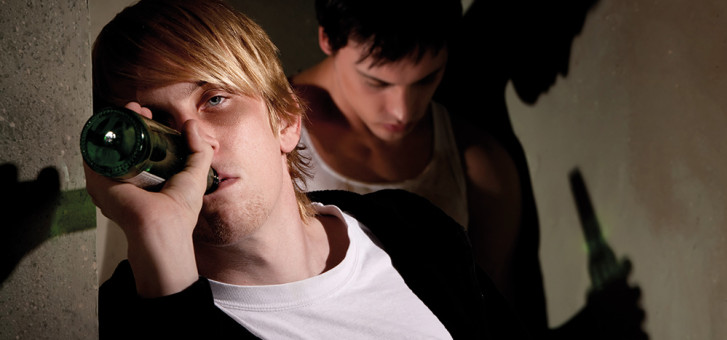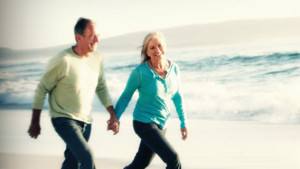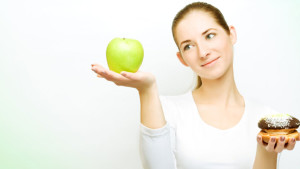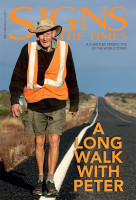Elspeth Muir’s brother, Alexander, died from drowning. It was 2009, and he had just turned 21.
He died from drowning, but his death “was not foreshadowed by his love of water except that it explains why he was near a river, alone, with a blood-alcohol content of almost 0.25. My brother died because he was drunk, and because the drink made him stupid.”
She writes of Alexander’s death and the drinking culture in Australia and within her family in her recent book Wasted. The subtitle—A Story of Alcohol, Grief and a Death in Brisbane—tells part of the story. He died after jumping off Brisbane’s Storey Bridge. His body was found three days later.
The coroner called it an “accidental death.”
Muir describes Alexander as a “middle-class white kid midway through a higher-education degree when he died.” But he’d begun drinking—sneaking out at night—at the age of 13.
He drank heavily as he got older. One of his mates told her: “I think me and him were probably the worst two at it. Ever since I can remember it’s the same thing—you’d drink until you couldn’t drink anymore and then you wouldn’t know what was going on, so you’d fall asleep somewhere.”
Muir herself was also a heavy drinker. “I don’t know why it was so important that there was alcohol, always. . . . With it, everything was softer, easier. You had a drink and you slid into nonchalance and from there into conversations and new situations and adventures and forgetfulness.”
Before Alexander’s death, “I didn’t think about alcohol, the way I didn’t think about eating or breathing. It was just an essential part of existence.”
But then, “There have been many times in my life, including the night I lost my virginity, when I wished I had drunk less, because my actions would have been different, safer.” She was a teenager when she lost her virginity to a man seven years older. The next morning he told her she had given him permission. She didn’t know if she had or not.
Hers is a sad story of the impact of alcohol on her family, but it’s bigger than that, as she says, “There is something unsettling and unsettled about the place of alcohol in Australian society.”
By any measure, alcohol is our biggest drug problem. A 2015 report from the Foundation for Alcohol Research and Education (FARE) reveals that more than 5500 Australian lives are lost every year (that averages to 15 a day), and more than 157,000 people are hospitalised due to alcohol (an average of 430 a day)!
And, unfortunately, drinking has become part of our Australian and New Zealand cultures. Last year the equivalent of 2.1 standard drinks per day, per person over the age of 15 was drunk in Australia. In New Zealand it was 2.0 standard drinks per day, per person over the age of 18.
And its negative impact on families is often under-appreciated.
Alcohol and unborn babies
Pregnant women should not drink alcohol at all because of the danger of Foetal Alcohol Spectrum Disorder (FASD). However, while 78 per cent of Australian mothers are aware that alcohol could have a negative health impact on the foetus, 59 per cent drank at some time and to varying degrees during their pregnancy. In serious cases, children born with FASD are smaller in size and have an abnormal appearance. More often it isn’t noticed until the child goes to school when learning and behavioural difficulties become more apparent.
FASD is considered internationally to be the leading preventable cause of intellectual and developmental problems in children. And there’s evidence that it is under-diagnosed with parents and doctors not realising that FASD is the cause of a child’s developmental problems. It’s estimated that 1 in 100 children are born with FASD.
Alcohol impacting on children
Alcohol can adversely affect brain development and lead to alcohol-related problems in later life. Children under 15 years of age are at the greatest risk of harm from drinking. The strong recommendation is that children under 15 not drink at all, and those in the 15–17 years range who plan to drink, that they delay their first glass for as long as possible.
But the negative impact of alcohol is broader than this with FARE estimating that more than a million Australian children a year are affected negatively by “someone else’s drinking,” with about 143,000 affected “a lot.”
This includes such things as: being unsupervised; verbally and/or physically abused; and exposed to domestic violence. Almost half of those abusing these children were parents (46 per cent), usually the father, sometimes the mother. Others were step-parents, the carer’s partner or ex-partner, or the child’s guardian. At times the children need to be taken out of their homes for their own safety.
These accounts from family and friends give some insight into the tragedy:
“One night [he] was physically abusive to [their] mother and the three of them witnessed it. . . . They’d been out to a party and something she said to him, stop drinking or something . . . and when he got in the door he actually tried to strangle her.”
One mother said: “It hasn’t affected my son at all but it has affected my daughter and she lives with him now and I think she does without certain things because he doesn’t have financial security due to his alcohol problem. . . . She asks me for money a lot.”
Thankfully, there are the occasional happy endings. “My husband was a binge drinker until my daughter was three.” This wife tells of deep conflict between her and her husband. She was about to leave him because of his binge drinking, “But,” she said, “it came to a head and he stopped. I very much respect him for that.”
Alcohol is a real problem
Unfortunately, alcohol is often considered an essential for both celebration and for commiseration. But, as seen, the cost can be horrendous for individuals and families.
Yet, unless there’s a crisis or tragedy that hits home, it often isn’t recognised. For Muir, “It never occurred to me that I had a problem with drinking or that Alexander had a problem with drinking or that anyone I knew had a problem with drinking, despite the many incidents that indicated we did. The way we drank was just how everyone we knew drank.”
Then there’s the financial cost, which is also quite astounding. The Australian Institute of Criminology estimated in 2010 that the cost of alcohol to the public purse was $15 billion. Revenue from the sale of alcohol was less than half that at $7.1 billion. That leaves an $8 billion gap.
What we need is a long and sober (pun intended) look at the impact of alcohol in our society. There’s little to recommend it. In fact, it’s a danger to life, to families and to health. It needs to be de-glamorised. Advertising needs to be restricted and sponsorship limited. Sports stars need to be banned from talking about celebratory drinks—and sports teams need to lead the way in promoting healthy ways of celebrating without alcohol.
What we need are more heroes like Harry. Harry died in 2012 at the age of 78. He’s buried in Wesburn cemetery on the Warburton Highway, east of Melbourne. I never met or knew Harry, but I’ve seen his headstone. It proudly proclaims: “Sober for 30 years.”
Now, that’s something worth celebrating.
How parents encourage drinking
Parents are the largest supplier of alcohol to under-18s in Australia with almost one in six children, aged 12 and 13 years, being given alcohol by their parents.
The problem is that teenagers of parents who supply them with alcohol in early adolescence are three times as likely to be drinking full serves of alcohol at 16 years of age—compared to those in families who don’t supply alcohol.
That’s the finding of research on alcohol consumption that followed the lives of nearly 2000 parent/child pairs over a four-year period. Conducted by the National Drug and Alcohol Research Centre at the University of New South Wales, its findings were published in 2014.
Many parents give their children alcohol with the best of intentions, says chief investigator Richard Mattick . He discovered interest in the so-called “European model” where parents allow children to sip wine at a young age.
Parents do this to introduce alcohol in a safe, supervised environment with the aim of moderating a child’s drinking. However, the results show that supplying children with alcohol doesn’t moderate drinking. In fact, it may simply sanction it with the possibility of children given alcohol by their parents seeking it from a variety of other sources.
“We know that adolescent drinking is associated with a wide range of later harms in early adulthood, including injury, sexually-transmitted diseases, adult alcohol dependence and changes in brain function,” says Mattick.
—A Rob Moodie, Penny Tolhurst and Jane E Martin, in the Medical Journal of Australia
Off target!
One item at the more or less midway point of the 2009 Preventative Health Targets list, with a target date of 2020, is to: “Reduce the proportion of Australians who drink at short-term risky or high-risk levels to 14 per cent, and the proportion of Australians who drink at long-term risky or high-risk levels to 7 per cent (NPHT).”
The target are the 19.1 per cent (2013) of Australians who drink at long-term risky levels. Unfortunately, a recent study showed increases in medium- and high-risk drinking among adults from 2001 to 2012, consistent with very high levels of alcohol-related hospital emergency department presentations. Of concern are high levels of risky drinking among the young—teens aged 15–18, and increasing risky drinking levels among young women.
The likelihood of hitting the 2020 target is rated as “unlikely to be met.”








